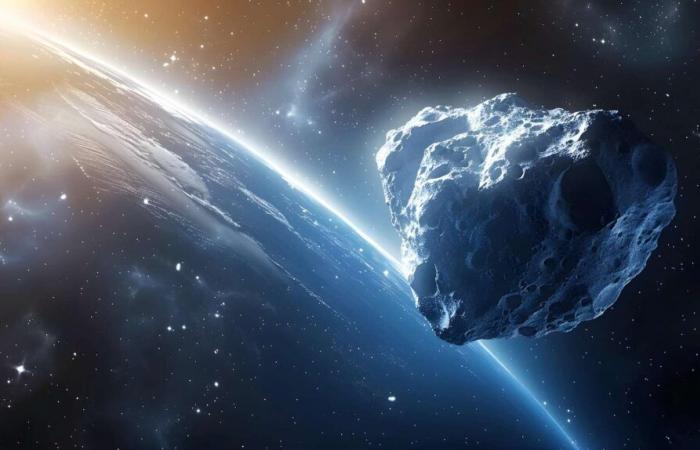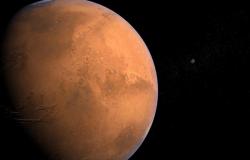99942 Apophis (Apophis being the Greek name for the Egyptian god Apep, the Destroyer) is an example of a near-Earth asteroid whose size is estimated around 370 meters and which was discovered on June 19, 2004 by Roy Tucker, David Tholen and Fabrizio Bernardi participating in theUniversity of Hawaii Asteroid Survey (UHAS), an observation campaign funded by NASA and using the observatory based at Kitt Peak, Arizona.
Originally cataloged as 2004 MN4, the asteroid was later renamed Apophis (it appears that among the astronomersastronomers at the origin of the discovery there were fans of the series Stargate). Early estimates of its orbital parameters had led astronomers to worry, as an impact with Earth became possible on April 13, 2029 (early calculations indicated a 2.7% probability that the 27 million-ton asteroid hits our planet).
An explosion on Earth in 2029 of tens of thousands of Hiroshima bombs?
However, certain estimates concerning its composition (it was once thought that it was the equivalent of meteorites called siderites, therefore metallic and dense, but today we think that it is more related to rock chondrites) and its angle of impact with the Earth suggested that it would then cause an explosion equivalent to tens of thousands of times the bomb that wiped the city of Hiroshima off the map in 1945 (99942 Apophis would enter theatmosphereatmosphere with 1,200 megatons ofkinetic energykinetic energyor the energies of the impacts having created the Meteor CraterMeteor Crater or the Tounguska event are estimated between 3 and 10 megatons). Its fall into the ocean would hardly be more joyful because it would produce a tsunamitsunami with waveswaves 170 meters high moving at 100 km/h!
Asteroids can be dangerous to life on Earth, but they also provide clues about the early days of the Solar System. In the video series Asteroid Crash CourseDenton Ebel, curator in the Museum’s Division of Physical Sciences, explains how asteroids formed and the varying degrees of destruction they cause when they fall to Earth. To obtain a fairly accurate French translation, click on the white rectangle at the bottom right. English subtitles should then appear. Then click on the nut to the right of the rectangle, then on “Subtitles” and finally on “Automatically translate”. Choose “French”. The series was developed by the American Museum of Natural History in New York, in collaboration with the Denver Museum of Nature and Science; GOTO, Inc., Tokyo, Japan; and the Shanghai Science and Technology Museum, China. © American Museum of Natural History, New York, NY
Fortunately, during the last days of December 2004, a photographyphotography taken a few months before June and already showing 99942 Apophis (its official name from now on) had been found in the archives, leading to a more precise assessment of the asteroid’s trajectory. It had already become clear, in 2004, that an impact was in fact very unlikely in 2029. As the years passed, with the accumulation of new data, the risk continued to decrease further. The researchers did have some concerns for 2036, and 2068 thereafter, but here too the risk assessments only gave decreasing probabilities of encounters. It is now even estimated that 99942 Apophis only has a one in 110,000 chance of colliding with Earth between 2060 and 2105.orbitorbit of the near-Earth could in fact be refined thanks to the Arecibo radar, in Puerto Rico, in January and August 2005, then in May 2006.
99942 Apophis will be visible to the naked eye in April 2029
NASA has therefore had no concerns for 2029 since 2004, and very little for 2036 since at least 2013. On the other hand, within four years, amateur astronomers and even the general public should be celebrating because 99942 Apophis is expected to pass approximately 31,000 kilometers from Earth, i.e. within the Clarke orbits of the satellites geostationary. Given its size, it should be visible ateyeeye naked on topsouthern hemispheresouthern hemisphere. Flying over the Earth from the east coast to the west coast of Australia, it will then cross the Indian Ocean and then the eastern United States.
In 2010, Cnes was already reassuring about Apophis. © Cnes, French space agency
Astronomers are already thinking about what they can do then. Thus, for Marina Brozović, a specialist in radar observations in astronomy at the Jet Propulsion LaboratoryJet Propulsion Laboratory from NASA in Pasadena, California: “The close encounter between Earth and Apophis in 2029 will be an incredible opportunity for science. We will observe the asteroid with telescopestelescopes in the visible, but also with radars. With radar observations, we may be able to see surface details from just a few meters away. »
In 2013, Cnes was even considering a mission to Apophis. Finally, NASA did it by extending the mission ofOsiris-RexOsiris-Rex which has already distinguished itself with samples from the surface of the asteroid Bennu to divert it to Apophis, becoming the Osiris mission-Apex pour Apophis-Explorer. L’ESAESAfor his part, is preparing the Ramses mission. We could learn many things that would be valuable in determining the best strategy to adopt to deflect a truly dangerous asteroid, for example those concerning the internal structure of 99942 Apophis.
While waiting for 2029, the saga of scientific articles about Apophis continues, as clearly shown in an article available online at arXiv. A team of researchers suggests, based on numerical simulationsnumerical simulations on computercomputeronly landslides and especially earthquakesearthquakes are expected to occur on the asteroid due to tidal forcestidal forces what will the field of gravitygravity of the Earth, during the close passage of the small celestial body.
The conundrum of missing space erosion
THE astrophysicistsastrophysicists were brought to this result by seeking to solve a problem with asteroids. We know, in particular by studying those of the main asteroid belt between Mars and JupiterJupiterthat their surface is continually bombarded by dust and small stones from collisions between asteroids. The impact of particles from the solar windsolar windso that we know that there is what we can call spatial erosion.
The result is that the appearance of the surface of these asteroids in the belt is not the same as that of the surface of meteorites that have fallen to Earth, which is fresh and has not undergone erosion, the meteorites being remained in space for too short a time between their ejection due to the fragmentation of a parent body following a collision and their arrival on Earth.
However, strangely, when near-Earth asteroids pass close to the Earth, their surfaces – again – do not show traces of space erosion.
The answer that researchers give today is that the tidal forces of the Earth, shaking and kneading an asteroid during its trajectory close to the Earth, therefore cause earthquakes and landslides “resurfacing” the skin of the asteroids. , so to speak, making it free from the effects of spatial erosion. To be precise, landslides there are mainly caused by changes in the axis of rotation and the rotation of asteroids due to the attraction of the Earth. These modifications would lead to the destabilization of surface rocks. But, unlike seismic tremors, these changes will occur gradually.
We will perhaps have observations confirming this scenario which would therefore resolve a decades-old enigma with data from the Osiris mission-ApexApex which, for 18 months, will study the chemical composition and map the surface of 99942 Apophis.






